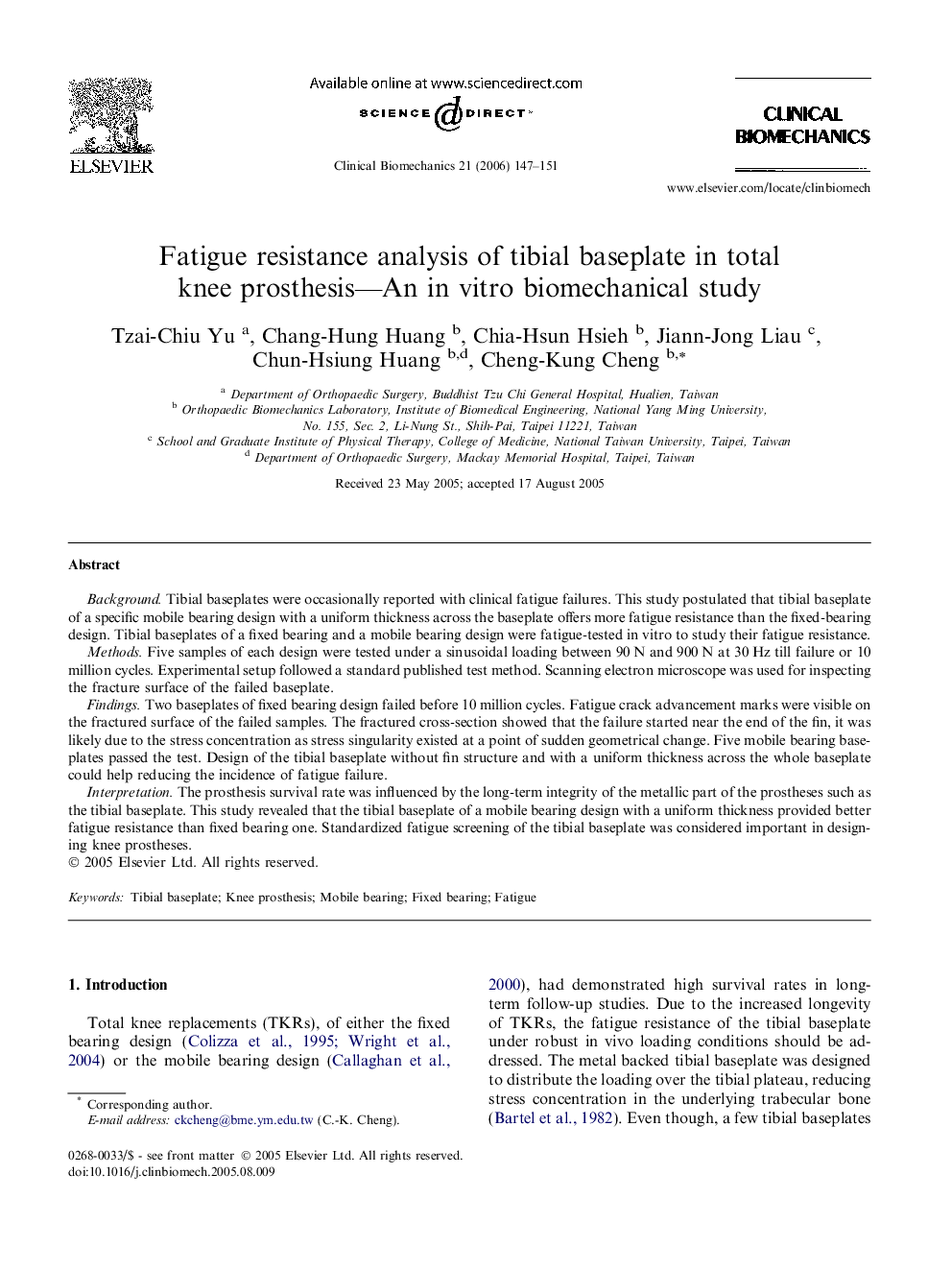| Article ID | Journal | Published Year | Pages | File Type |
|---|---|---|---|---|
| 4051774 | Clinical Biomechanics | 2006 | 5 Pages |
Background. Tibial baseplates were occasionally reported with clinical fatigue failures. This study postulated that tibial baseplate of a specific mobile bearing design with a uniform thickness across the baseplate offers more fatigue resistance than the fixed-bearing design. Tibial baseplates of a fixed bearing and a mobile bearing design were fatigue-tested in vitro to study their fatigue resistance.Methods. Five samples of each design were tested under a sinusoidal loading between 90 N and 900 N at 30 Hz till failure or 10 million cycles. Experimental setup followed a standard published test method. Scanning electron microscope was used for inspecting the fracture surface of the failed baseplate.Findings. Two baseplates of fixed bearing design failed before 10 million cycles. Fatigue crack advancement marks were visible on the fractured surface of the failed samples. The fractured cross-section showed that the failure started near the end of the fin, it was likely due to the stress concentration as stress singularity existed at a point of sudden geometrical change. Five mobile bearing baseplates passed the test. Design of the tibial baseplate without fin structure and with a uniform thickness across the whole baseplate could help reducing the incidence of fatigue failure.Interpretation. The prosthesis survival rate was influenced by the long-term integrity of the metallic part of the prostheses such as the tibial baseplate. This study revealed that the tibial baseplate of a mobile bearing design with a uniform thickness provided better fatigue resistance than fixed bearing one. Standardized fatigue screening of the tibial baseplate was considered important in designing knee prostheses.
